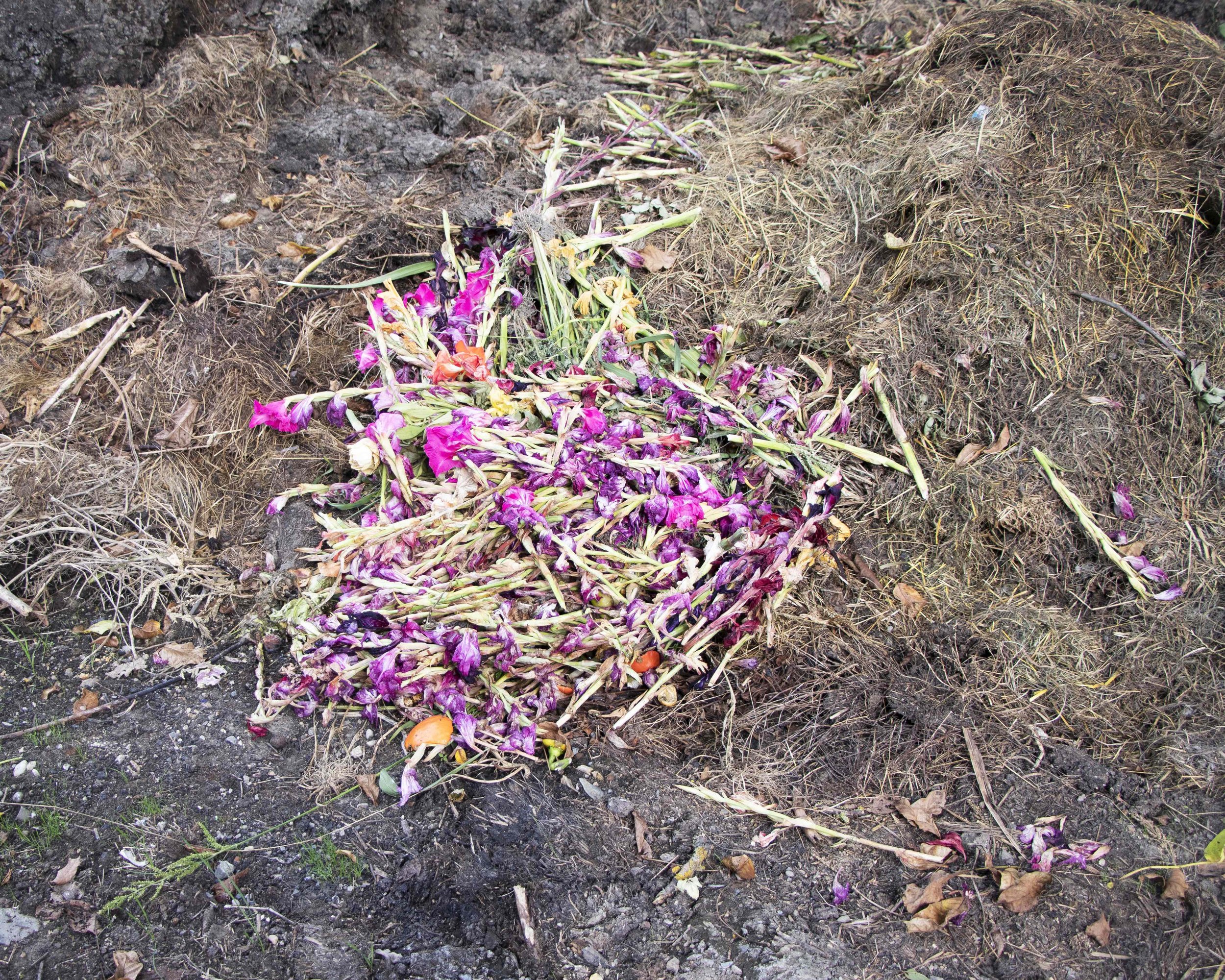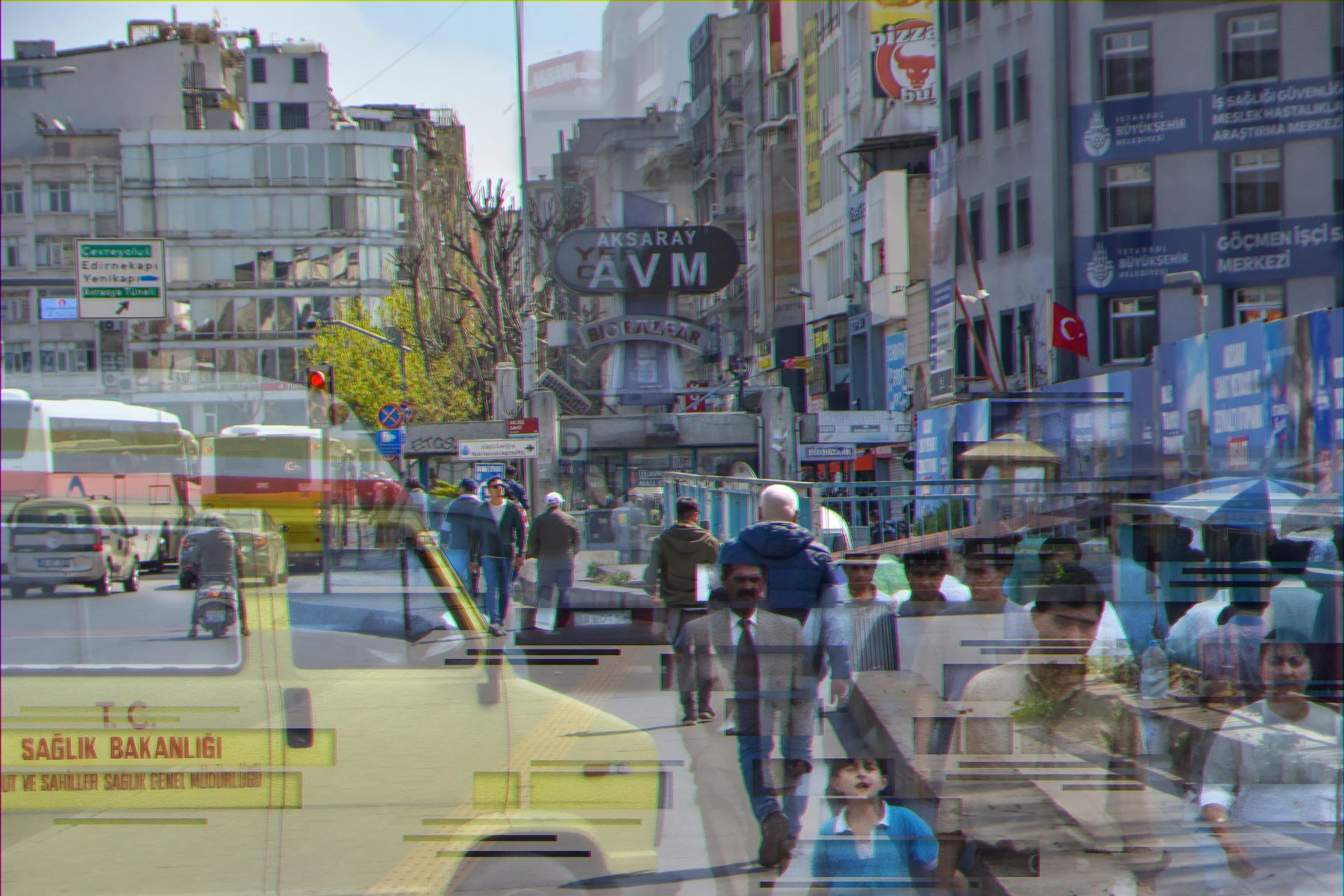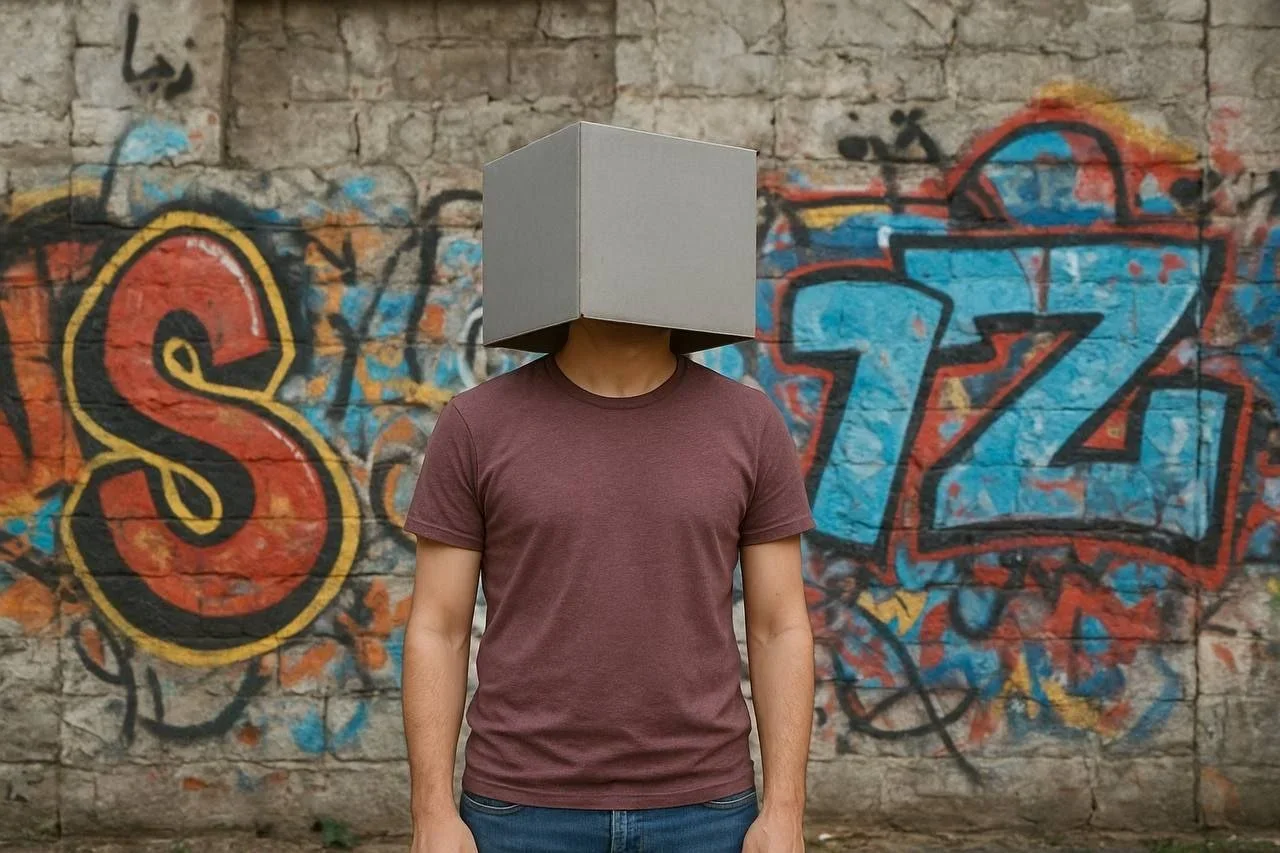10 Questions with Sára Kasanová Bown
Al-Tiba9 Art Magazine ISSUE16 | Featured Artist
Sára Kasanová Bown (b. 1993) is a visual artist specializing in photography, video, and installation media. Her work explores themes, including the non-linear perception of time, vulnerability, and human connection, reflecting a deep engagement with the human experience. Born in the Czech Republic and having lived in the United States, Sára’s practice is informed by a blend of cultures. She earned her BFA (2017) at Brigham Young University in Utah, USA, receiving multiple grants, awards, and scholarships, including the Film and Digital Media Grant and juror’s 1st place in the Mayhew Show. Sára was an artist assistant to David Thrope (2016). In 2022, she completed her MFA at the Academy of Fine Arts, Prague. Sára has exhibited her work internationally and currently lives and works near Prague.
Sára Kasanová Bown - Portrait
ARTIST STATEMENT
Sára's work consists of photography, videos, and installation pieces, engaging with imagery that reflects her personal experiences and perspectives of the world. Some of her videos and photography pieces work interchangeably, with her videos functioning as durational photographs and her photographs often being part of a series. She is interested in instances when the mind zones out. In these moments, she focuses on details and reduces visual information to draw the viewer towards introspection. Her art explores themes of time, non-linearity, vulnerability, and human connection. Her art is intuitive; she pays attention to her surroundings and takes note when something moves her. She delves into an image or phenomenon and then builds on her observations and research until she creates a body of work. Shadows of leaves, water surfaces stirred by the wind, or a hand performing a subtle motion are the types of images she is drawn to because of how quietly they communicate their intimate stories.
Untitled (Rhythmical Walk), Photography, 110x88 cm, 2023 © Sára Kasanová Bown
The Water Level in the Vase Dropped. The Shorter Stems Could No Longer Reach the Surface | Project Statement
Sára created this photo series in the spring of 2023 and 2024 after moving from the city of Prague to the suburbs. Watching nature transform up close and consistently left her in awe. During this time, she took two to three walks through the forest daily, observing changes she never had in the city. The sprouts reminded her of newborn humans with crumpled, fuzzy, and fragile leaves. This made Sára reflect on vulnerability and the frustrating reality that the weakest and youngest are the most exposed.
The Water Level in the Vase Dropped; the Shorther Stems Could No Longer Reach the Surface, Photography, 45x36 cm, 2023 © Sára Kasanová Bown
AL-TIBA9 ART MAGAZINE ISSUE16
INTERVIEW
Please tell us a bit about yourself. You were born in the Czech Republic but later moved to the United States. How do these different environments and cultures influence your work?
I grew up in the Czech Republic in the 90s. I had a lot of freedom and trust from my parents, who often didn't know where I was or what I was up to. During high school, I spent my afternoons roaming the city's streets, engaging in existential and philosophical conversations with friends. I was also fortunate to be surrounded by my parents' college friends, who formed a strong community that sparked my early interest in education. This early exposure to intellectual conversation and a desire for broader horizons eventually led me to move to the United States. I was only six years oldwhen I first expressed my intent to study in the US.
Regarding my work, I have been strongly influenced by the American love for hard work, which sets an expectation that I will consistently perform at a high level and continually produce art, ideally without periods of stagnation. In Prague, I learned to integrate art into everyday life and to think more creatively about how art is exhibited. Generally, I gravitate toward minimal imagery, which I believe comes from the visuals of my childhood—grey concrete buildings standing against an overcast sky. I am not overly concerned with color, and bluish-grey feels like where I mentally reside.
What training or studies helped you further develop your practice? Did you encounter any mentor or have any significant experience you want to share?
Both my undergraduate and graduate school experiences were essential in my development, as I had received very little artistic training before adulthood. I was fortunate to meet some incredibly generous students and professors who pointed me in directions that were exciting to me and helped me understand that art is so much more than just its visible form.
At Brigham Young University, one of my classmates mentioned that her favorite artists were those she shared a studio with, and I have found that to be true for me as well. I was always thrilled to see the new things my friends were working on, and we would share ideas and inspiration back and forth.
Graduate school at the Academy of Fine Arts in Prague gave me a glimpse of what it is like to be an artist outside the academic environment. There was a lot of freedom, with no specific direction on what one might create, which was both challenging and liberating. Both of these experiences were invaluable to me.
Two people I consider mentors are Daniel Everett and Milena Dopitová. Everett, with his high standards and brilliant eye, emphasized that being a good human is even more important than being a good artist. Dopitová, with her deeplypersonable approach, had an ability during critiques to tap into the very essence of artwork, often understanding what the artist was trying to achieve before they did.
Clouds, Rain, Tears, and Wiping of Tears, Photography, 90x69 cm, 2024 © Sára Kasanová Bown
Clouds, Rain, Tears, and Wiping of Tears, Photography, 90x70 cm, 2024 © Sára Kasanová Bown
Your work spans photography, video, and installation. How do you approach choosing the medium for a particular piece, and what determines that choice?
In most cases, I tend to work backward. I use photography as a way to process what I am seeing and to get to know things and places I occupy at some moment in time.
I choose video when I want to communicate a narrative or convey a specific concept with more clarity. Installation work often comes into play when I am dealing with a larger concept, which frequently results in video installations.
There are also instances where a piece starts as a clear concept without a defined physical form. For some works, I begin by coming up with the title, and from there, I brainstorm ideas to decide which medium and form would best convey what I want to communicate.
Can you describe your creative process, from the initial spark of inspiration to the final execution of a piece?
I continuously generate images and footage to which I am drawn. Later, I spend a good amount of time with them in post-production. I like to play several frames of moving images simultaneously on my desktop and see how different combinations interact and affect me. Often, I find retrospectively what I was doing.
Lately, my ideas have become the driving force of my creative process, and my art ends up being a reflection of my experiences. I also like to stumble upon art. This means I need to be in a present kind of state. For instance, one time, I was trying to figure out a piece for a show while putting my son to sleep outside. I looked up and noticed a tarp covering a seating area, moving in a wave-like pattern with the wind. I framed it in a particular way, and that became the video piece I ended up using.
Untitled (Walk), Photography, 110x88 cm, 2023 © Sára Kasanová Bown
The themes of non-linear perception of time and vulnerability are prevalent in your work. How did these interests develop, and what personal significance do they hold for you?
I have always been intrigued by how certain life events seem to repeat, as if time operates in a loop rather than a straight line. I wonder if things truly move forward only once we fully accept them. I also think about how nature changes and how the seasons repeat; observing these cycles closely has naturally seeped into my art.
My interest in vulnerability comes from a very personal experience in which I became involuntarily vulnerable due to my trust and young age. On one hand, I am bothered by the fact that the weakest, or the youngest, are often the most vulnerable. On the other hand, I try to stay open and vulnerable because that is how we preserve meaning in relationships.For me, part of being an artist is facing the complexities and challenges of the world without becoming cynical.
You often explore subtle, everyday moments in your art, such as shadows of leaves or water surfaces. How do you select these subjects, and what do they represent to you?
I am drawn to imagery that slows me down or pulls me out of what I call unconscious living. These (usually moving) images often cause me to stop whatever I am doing and simply stare, zoning out for a moment. My selection of subjects is heavily influenced by how I respond to them in real life. Water surfaces, for instance, serve as a beautiful reminder that life is dynamic and consequentially transformative.
Untitled (Zandvoort), Photography, 70x56 cm, 2024 © Sára Kasanová Bown
Untitled (Zandvoort), Photography, 70x56 cm, 2024 © Sára Kasanová Bown
Your work is intuitive and reflective of your personal experiences. How do you balance personal narrative with broader, more universal themes in your art?
I am not sure I have a definitive answer to this question but I believe that the more personal the work is, the greater its potential to resonate with a broader audience. I often keep my images fairly abstract and open to interpretation. While I am usually thinking about something very specific, I encapsulate it within a more general narrative.
Having exhibited internationally, how do you feel your work is received differently in various cultural contexts? Do you tailor your approach based on the audience?
I feel my work has been more appreciated globally than locally. I try not to compromise who I am as an artist or what excites me based on the audience. Instead, I focus on seeking out opportunities that align with my work.
Saak, Photography, 40x28 cm, 2021 © Sára Kasanová Bown
Can you share any upcoming projects or exhibitions you are currently working on, and how do they expand on or differ from your previous work?
I am currently preparing for an upcoming group show at Chotěšov Abbey in the Czech Republic. This location is significant as it was the first all-female abbey in the Czech lands, which is something I am responding to in my artmaking. The Premonstratensian nuns who lived there followed a very strict and repetitive schedule where each hour of the day had a specific purpose and focus. I am intrigued by their choices to abstain from certain types of relationships and the decision not to bring children into the world. I am exploring what they might have gained in return. I also wonder about the dynamics of their daily lives—what their meal preparation looked like, what they dreamed about, and how they navigated their existence.
Creating art based on a particular place and storyline is something I have not extensively done before. At the end of the day, I am still bringing my own perspective, finding parallels between the lives of the Premonstratensians and my own. As a mother of young children, I find the concepts of non-linear time perception and repetitive daily tasks to resonate with me, and in some ways, our lives may not be as different as they initially seem.
These themes are ones I probably would not have explored without the external prompt of this project. My plan is to combine photography, ceramics, and installation, featuring hundreds of repeated marks, to convey these ideas.
Lastly, what new themes or techniques are you excited to explore in the future, and how do you see your work evolving in the coming years?
I let themes develop organically, as my art is inherently connected to life's experiences. I expect my work to transform as everything else changes with time. I am particularly drawn to ceramics and 3D objects and would like to explore spatial art more, especially because the idea of creating it terrifies me.



























